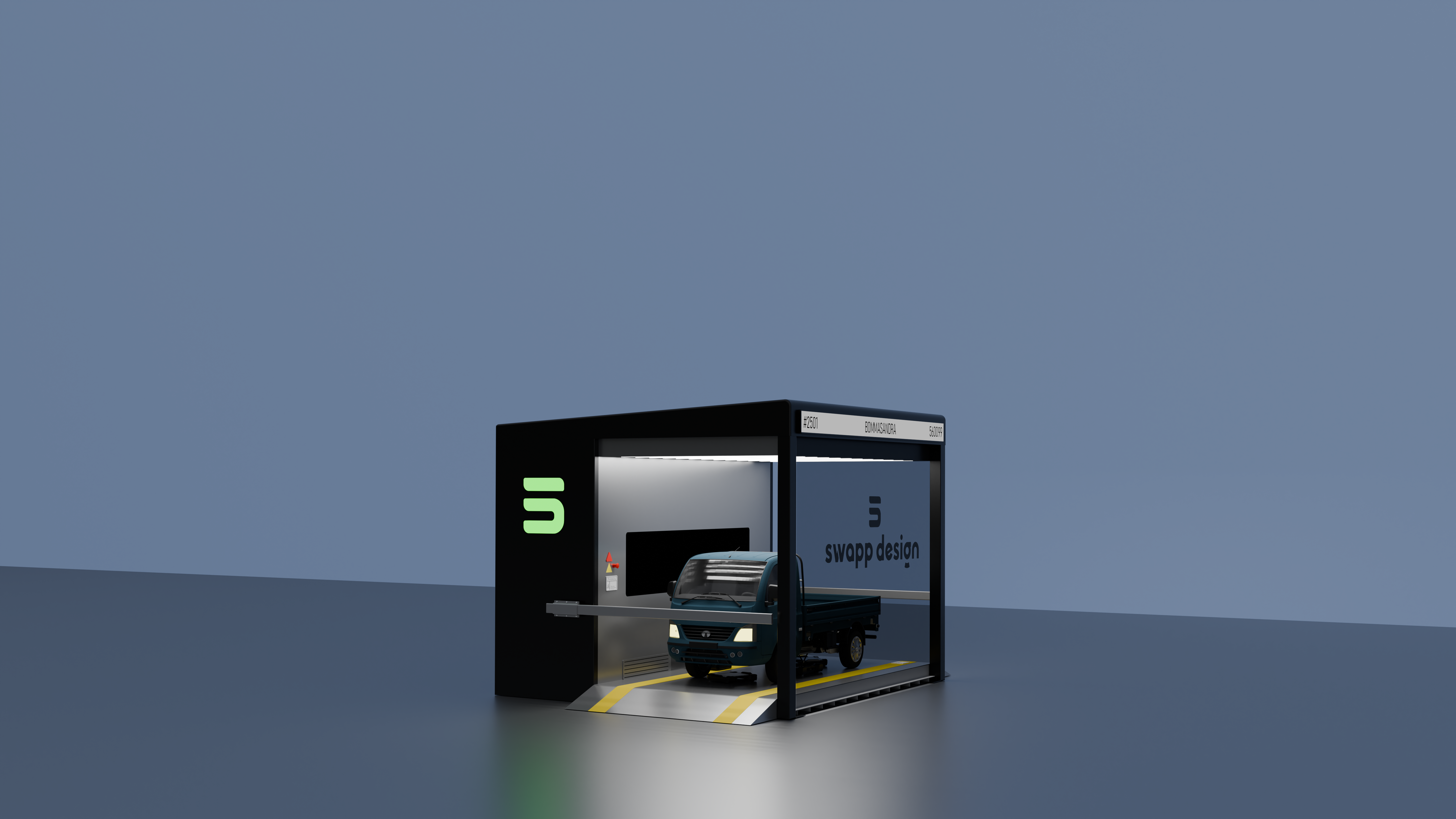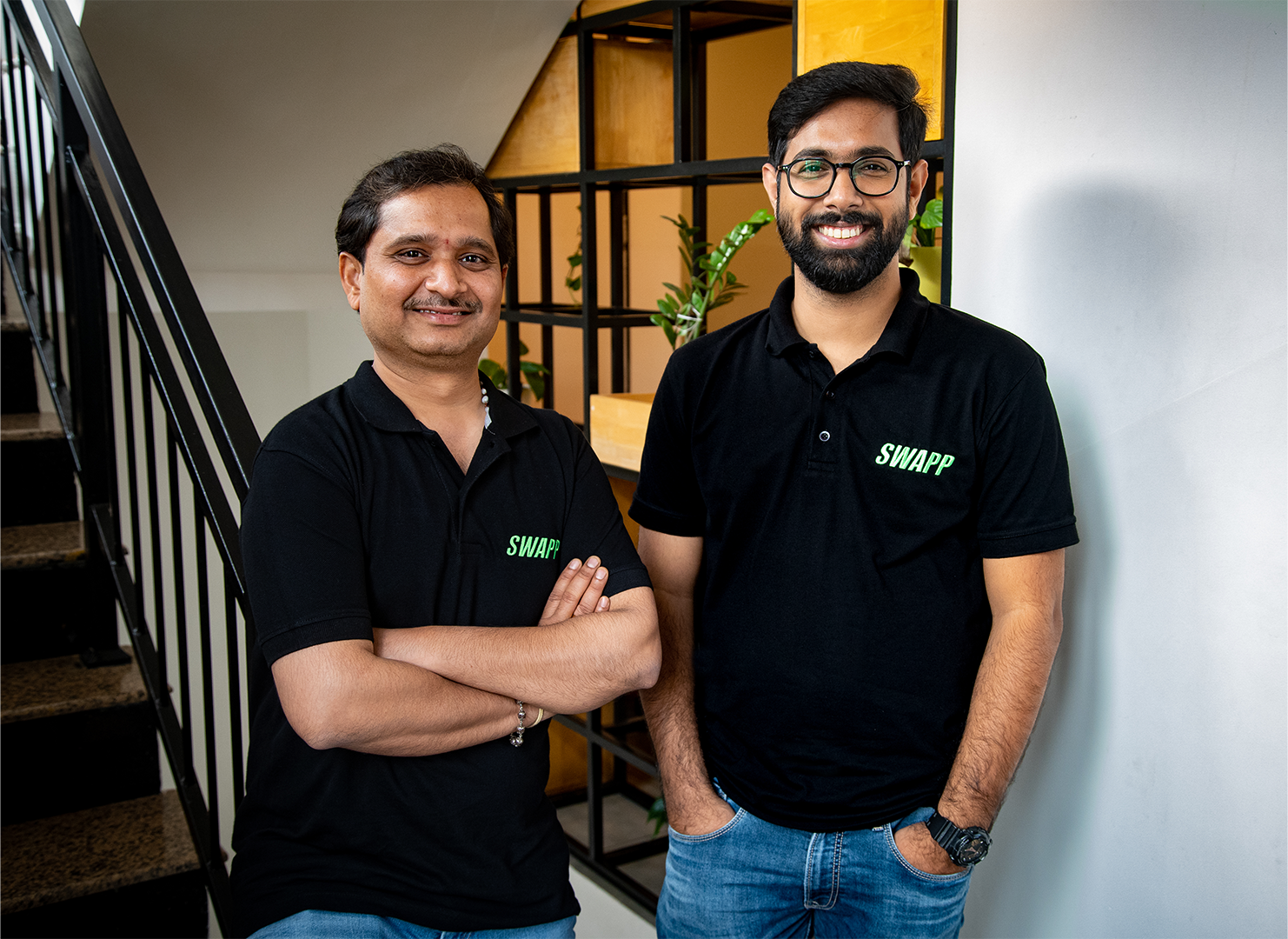
Q1: Swapp Design is developing one-minute autonomous battery-swapping systems for electric vehicles, targeting efficient energy refuelling for urban mobility. What factors made the 4W+ cargo segment the most strategic entry point, and what operational or ecosystem challenges were anticipated in addressing this segment’s specific mobility needs?
We focus on large-format electric vehicles — 4W and above — including cars, Light Commercial Vehicles (LCV), buses, and trucks. In these high-energy segments, fast charging is inefficient, power hungry, and difficult to scale, making autonomous battery swapping a more viable refuelling solution.
As highlighted in the IEA–NITI Aayog report “Transitioning India’s Road Transport Sector,” nearly 80% of CO₂ emissions from road transport come from trucks, cars, and buses — pointing to where real climate impact can be achieved.
The 4W+ cargo segment became our most strategic entry point because urban logistics fleets demand high uptime, fast turnaround, and low operating costs. Our one-minute autonomous swapping system eliminates downtime and decouples vehicle cost from battery cost.
We anticipated challenges in interoperability across vehicle platforms, reliability under demanding duty cycles, and coordination among OEMs and fleet operators — all addressed through our modular, OEM-agnostic, and automation-driven architecture.
Q2: Given the diversity of EV architectures in the Indian market, interoperability remains both a technical and strategic challenge. How is your system design being optimized to accommodate multiple vehicle models and battery specifications while maintaining precision, safety, and reliability?
We believe interoperability begins at the design level. We’ve designed a commonized battery architecture for each vehicle category — one for LCVs and another for buses — ensuring that all vehicles within a category can use the same swappable battery. This commonization allows the robotic SwappBot and, by extension, the Swapp Station, to remain uniform across multiple vehicle models in that segment.
Since every EV model has unique chassis and packaging constraints, we developed an interoperability layer called the Portal — a mechanical and electrical interface that adapts the standardized battery to each vehicle’s design. This approach preserves OEM flexibility while achieving true interoperability across platforms.
From a business standpoint, interoperability directly impacts asset utilization and scalability. A single station network can serve multiple vehicle types, improving throughput and return on infrastructure. It also keeps R&D lean, accelerates market expansion, and allows us to serve customers at competitive price points without compromising precision, safety, or reliability.
Q3: Establishing autonomous swapping stations at scale demands thoughtful infrastructure and network planning. What considerations guide the selection of station locations, and how is scalability being balanced with cost efficiency, uptime reliability and competitive differentiation?
Our station deployment strategy is guided by three key considerations — demand density, route continuity, and grid readiness. We prioritize high-utilization freight corridors, logistics hubs, and industrial zones where uptime directly impacts operating economics.
Each Swapp Station is modular and autonomous, allowing rapid deployment, incremental scaling, and reliable operation with minimal on-ground dependency. Remote monitoring ensures high uptime and predictable maintenance.
By standardizing the station architecture and automation stack, we achieve scalability without proportionally increasing cost. Interoperability across vehicle types further enhances asset utilization, enabling a single station to serve multiple fleets efficiently.
This combination of autonomy, modularity, and interoperability defines our differentiation — allowing Swapp Design to scale a high-reliability swapping network that remains cost-efficient, flexible, and commercially sustainable from day one.
Q4: As a member of the Ellen MacArthur Foundation’s circular design community, Swapp Design emphasizes responsible innovation. How are principles of circularity being applied across the battery lifecycle—from reuse and repurposing to recycling—to minimize environmental impact?
Circularity is embedded in our design decisions. Every Swappable Battery and SwappBot incorporates principles such as Design for Disassembly (DFD) and Design for Serviceability (DFS), enabling components to be repaired, reused, or repurposed rather than discarded.
We operate on the principle that recycling is necessary but insufficient — sending a product to recycling when parts of it still have life is wasted value. Repurposing applies not only to cells at end-of-life, which can be redeployed in secondary applications like stationary storage, but also to components that have not aged, such as Battery Management System (BMS) units,
connectors, and structural elements, which can be reused or integrated into new battery packs.
Looking ahead, Swapp Stations themselves are designed to function as reverse logistics nodes, enabling the collection, refurbishment, and redeployment of components, making circular thinking economical and scalable.
By embedding circular economy principles into both hardware and operations, Swapp Design minimizes environmental impact while creating cost-effective, sustainable solutions for large-format EVs.
Q5: The integration of AI, machine learning, and robotics lies at the core of the company’s technological approach. In what ways do these systems interact to enable faster swap cycles, predictive maintenance, and optimized battery performance in real time?
Machine learning and robotics operate as an integrated system to enable fast, reliable, and intelligent battery swapping.
Robotics provides precise mechanical handling, positioning the battery with millimeter level accuracy during swaps. AI and machine learning drive perception, decision-making, and predictive control — the system primarily uses cameras to perceive the environment, aided by proprioceptive sensors that track the robot’s own motion and positioning. This ensures safe, repeatable operations across varying conditions.
Predictive maintenance is enabled through continuous monitoring of robot actuators, battery health, and station performance. Machine learning algorithms analyze this data to detect early signs of wear or anomalies, allowing proactive servicing and minimizing downtime.
Battery performance is optimized in real time by integrating swap data with the battery management system (BMS), ensuring optimal state-of-charge, temperature management, and lifecycle tracking across multiple uses.
The result is a one-minute autonomous swap, with high throughput, reliability, and operational efficiency across fleets.
Q6: Looking ahead, what emerging technologies, process improvements, or strategic partnerships are expected to play a key role in shaping the next phase of Swapp Design’s evolution?
Over the next few years, large-format EVs (4W+) are expected to shift from conventional charging to autonomous battery swapping, powered by advances in robotics, AI, and
intelligent battery management. As swapping scales, battery sizes will shrink, lowering upfront costs and material usage while maintaining operational efficiency.
We envision a transition from Battery-as-a-Service (BaaS) to Power-as-a-Service (PaaS) and eventually Mobility-as-a-Service (MaaS), integrating vehicles, infrastructure, and energy management into a seamless ecosystem that reduces logistics costs, improves fleet efficiency, and optimizes station and asset utilization.
Localization and technology advancement of critical components, such as EV battery cells, will further enhance reliability, affordability, and sustainability, supporting India’s growing EV industry.
Strategic partnerships with OEMs, fleet operators, and energy providers will drive standardization, interoperability, and scalable network deployment. Together, these initiatives will accelerate adoption, strengthen the EV ecosystem, and contribute to carbon-neutral urban mobility at scale.


Pathi Mohan Rao (left) and Buddhabrata Chakravorty (right)
Photograph Credits: Spacebot Entertainment Pvt Ltd
Buddhabrata Chakravorty and Pathi Mohan Rao, Co-founders, Swapp Design
Buddhabrata and Mohan lead the company’s vision, strategy, and technology. With deep expertise in automotive electronics, EV powertrains, and robotics, they have co-invented multiple patents in battery swapping and automotive systems. Together with their core team, they drive Swapp Design’s mission to deliver safe, scalable, and climate-positive mobility solutions for India’s EV ecosystem.
Background of Swapp Design
Swapp Design builds autonomous, one-minute battery-swapping systems for large-format EVs — LCVs, buses, and trucks. Combining robotics, AI, and battery technology with circular design principles, the company enables faster fleet operations, cost-efficient energy refuelling, and sustainable urban mobility. Its modular, interoperable systems and scalable infrastructure accelerate EV adoption while reducing carbon emissions, creating practical, climate-positive solutions for India’s commercial transport sector.